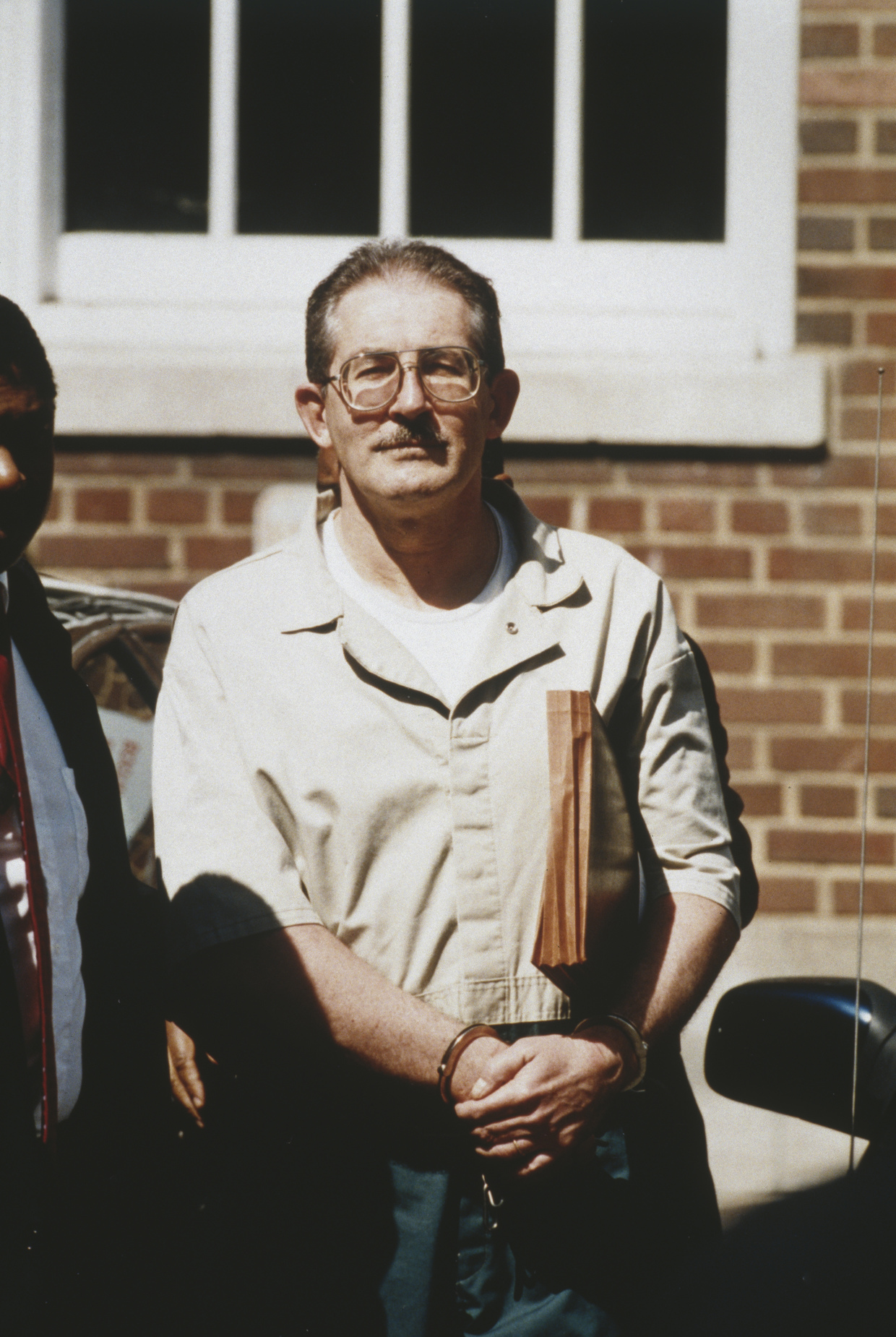Notorious: The story of the biggest CIA failure in history and the man behind it

The fictional portrayal of spies as noble, intelligent, and resourceful heroes doesn’t look very convincing anymore. Even the latest James Bond character is far from perfect. These days, people are captivated by “imperfect” agents and failed missions.
Perhaps this is tied to the fact that we have come to view intelligence agencies in a different light. During the Cold War, intelligence officers were seen as brave defenders who protected their nation against external threats. But things changed when the public found out that agencies actually spied on allies and conducted experiments on their fellow citizens. Just like that, they ceased to be heroes.
Blunders impact the reputation of intelligence agencies in a particularly negative way. One of the worst failures in the history of US intelligence came to light 30 years ago. In 1994, it became known that the KGB had recruited the CIA agent responsible for working with Soviet informants. As a result, the US organization had lost years’ worth of work.
His name was Aldrich Ames, and he committed treason to ensure a luxurious lifestyle for his wives. According to certain opinions, “the consequences of the Ames case were as bad as anything that can happen to an intelligence agency – short of defeat in a major war.”
Gentle recruitment
The recruitment of foreigners who had access to secret information had started long before the Cold War and was not merely the result of Soviet-US rivalry. For example, back in the 1930s, NKVD officers recruited the “Cambridge Five” – five high-ranking British officials (all of whom were Cambridge graduates), who passed on secret government documents to Moscow for almost 20 years.
The Cambridge Five included senior diplomats and civil servants. The group’s most valuable member was Kim Philby, who was an MI6 (British intelligence service) agent. Among other things, he warned Soviet intelligence about Operation Valuable – an unsuccessful Anglo-American attempt to overthrow the communist government in Albania. Over time, the Cambridge Five were exposed and its members fled to the USSR. There, they continued to work in the fields of diplomacy and intelligence. The Soviet Union even issued a postage stamp with Philby’s portrait that referred to him as a “Soviet intelligence officer.”
Soviet intelligence sought out “moles” in different countries. After World War II, special attention was paid to member countries of the “Five Eyes” – an intelligence alliance comprising the US, UK, Australia, Canada, and New Zealand. The rivalry between the intelligence agencies was also intense in divided post-war Germany. But, of course, the US remained the primary area of interest for the Soviet Union, and such work was handled by the First Branch of the First Chief Directorate of the KGB.
The KGB’s tactics were quite straightforward – in its history, there were no bizarre stories like that of Chinese spy Shi Pei Pu, who pretended to be a woman for 20 years in order to get secret information out of a French diplomat. “Moles” were usually recruited through “residents” – undercover agents who worked abroad, typically under the guise of embassy personnel or trade mission employees.
Residents sought out dissatisfied employees of foreign government agencies and invited them to work for the KGB for a generous reward. In some cases — as with the Cambridge Five – the “moles” agreed to spy not only for the money, but because of ideological sympathies for the USSR.
However, the recruitment of Aldrich Ames did not go according to the standard plan – he came to the KGB himself and volunteered to spy, even though no one had approached him.

The talented Mr. Ames
Aldrich Ames was born in 1941 in the state of Wisconsin. His father was an administrative worker at the CIA, which is perhaps why Ames also began working there part-time from the age of 16.
Ames liked studying other cultures and acting. But his studies at the University of Chicago and attempts to find work in local theaters fell through. He returned to the CIA as a clerk, and later successfully completed professional training and became a CIA agent.
In 1969, Ames was sent to Türkiye to recruit informants. He managed to infiltrate the Revolutionary Youth Federation of Türkiye, but in three years didn’t achieve any considerable results. On the recommendation of his supervisors, Ames was then given analytical and administrative work at the CIA headquarters in Langley, Virginia.
Despite the setback in Türkiye, Ames’ career took off after he returned to the US. He started working at the Soviet-East European Division, learned Russian, received positive performance reviews and was promoted. In 1976, he started working with Soviet assets and became familiar with KGB tactics.
Ames was somewhat careless in preparing reports – especially financial ones – and disregarded security. One day, going to a meeting with an informant, he left a briefcase with secret documents in a subway car. The briefcase was later retrieved, but no one knows who had taken a look inside.
These incidents, however, did not hamper his career growth, and Ames was sent to Mexico in 1981. The business trip wasn’t a success either, although Ames certainly had an eventful time. He drank heavily even getting into a brawl with a Cuban official – and cheated on his wife, who also worked for the CIA. Later, he met Maria del Rosario, a cultural attaché at the Colombian Embassy, who would become his second wife.
The setbacks in Mexico and his questionable moral conduct – the agent did not notify his superiors about his affair with a foreigner, a violation of CIA rules – did not prevent Ames’ career growth. His superiors liked his analytical skills and willingness to take on tasks that others wouldn’t. In 1983, he was transferred to the Department of Operations, which was engaged in counterintelligence. There, Ames gained access to information about CIA operations against Soviet intelligence and the names of informants.
At the time, Ames had financial problems. Divorce from his first wife was costly, and his second wife was used to a luxurious lifestyle, leaving the agent on the verge of bankruptcy. His CIA salary was not enough for his needs – so Ames decided to make a living in a different way.
In April 1985, he came to the USSR Embassy, where, as he knew, KGB agents operated, and left a parcel at the reception. Inside, he left his contact information, short excerpts from secret documents, and requested $50,000 for further cooperation.
Purges and suspicious teeth whitening
Soon, one by one, the CIA’s Soviet informants began to disappear. They were arrested, interrogated, and many were accused of treason and imprisoned or shot. In two years, the CIA lost over 30 “moles” – a huge part of its network. The flow of classified information from the USSR had almost stopped.
This “purge” happened after Ames provided the KGB with various documents that included information about “moles” and CIA intelligence operations. For the CIA, it was particularly hard to lose important sources such as engineer Adolf Tolkachev, who passed on information about new Soviet missile systems and fighter jets, and Main Intelligence Directorate (GRU) General Dmitry Polyakov, who exposed Soviet informants in the US. Both of them were shot.
Also, some of the information passed by Ames indicated that the chief of the KGB bureau in London, Oleg Gordievsky, passed secret documents to the British government. However, it is still not entirely clear how Gordievsky was exposed.
It was normal for intelligence services to lose informants now and then – “moles” and their supervisors risked exposure. But such a rapid and large-scale purge was out of the ordinary. It both prevented the CIA from accessing Moscow’s secrets and undermined the agency’s reputation. Soviet intelligence clearly showed Western “colleagues” and potential “moles” that it can quickly identify and punish traitors.

The CIA began to suspect that someone within the agency was helping the KGB. In 1986, a group of agents launched an internal investigation.
Ames didn’t like the fact that the information leaked by him was used so carelessly, since he automatically fell under suspicion as someone who had access to information about informants. His contacts in the KGB agreed, but claimed that they were powerless – the decision to promptly remove traitors was made “at the top.”
A generous reward helped calm Ames’ nerves – in the course of his cooperation with the KGB, he received a total of $4.6 million. Realizing that his sudden wealth may look suspicious, he tried to launder money through his wife’s relatives. However, Ames still spent significant amounts: he bought a house worth $540,000, a Jaguar sports car, and wore premium brands. His credit card payments exceeded his monthly salary.
Ames’ love of luxury could’ve helped the CIA expose him sooner, but he had knowledgeable supervisors. The KGB wanted to protect its valuable new informant, so its agents launched a disinformation campaign starting in late 1985. They leaked information to the CIA and the FBI that made it look like their sources were still alive but refused to cooperate with them, or that they had been punished for other reasons unrelated to the internal security breach. At the same time, the KGB was leading the investigation on a false trail, pointing to another CIA officer as the supposed traitor.
The so-called “Angleton phenomenon” – named after former CIA counterintelligence chief James Angleton – also slowed down the investigation. Angleton believed that all secret intelligence agencies should be assumed to be penetrated. He pursued possible traitors in the CIA so zealously that it led to political and career conflicts within the agency, and counterintelligence was no longer highly regarded. For a long time afterwards, agents refused to believe that high-ranking officers can easily switch sides.
Ames was on the list of suspects and even had to take a lie detector test twice. His answers attracted the attention of the investigation, but at the time, it did not reach a final decision.
Ames continued to work for the CIA for eight more years. In 1986, he was sent to work in Rome, where he started to drink heavily again and struggled with his work. In 1990, he was transferred to the CIA’s Counterintelligence Center Analysis Group, where he had even more access to sensitive information.
Eventually, the “mole” was exposed because of his lavish lifestyle. Colleagues noticed that he had started wearing expensive clothes and had undergone an expensive teeth-whitening procedure (his teeth used to be covered with plaque due to smoking). The investigation discovered other suspicious expenses, and Ames was placed under surveillance.
On February 21, 1994, he was arrested along with his wife. At first, Ames denied everything, but then he made a deal with the investigation to ease the punishment for his spouse. In court, he revealed he had exposed “virtually all Soviet agents of the CIA and other American and foreign services,” which he knew about because of his high-ranking position in the CIA. Ames was sentenced to life in prison and is currently serving his sentence at the Federal Correctional Institution in Terre Haute, Indiana.
The Ames case received widespread media coverage. It also caused an uproar in Congress, and even colleagues from the FBI turned against the CIA. Politicians and the public were indignant because of the long investigation and the fact that no one in the CIA was fired or at least demoted after Ames’ exposure. CIA Director James Woolsey commented that it was “not his way” of dealing with things. Soon afterwards, he was forced to resign.
Due to the intense media coverage, the story stuck in the minds of Americans, and Ames is still considered the “worst CIA agent.” Perhaps this is not entirely fair, since he was able to cause so much damage only because he was promoted and given access to secret information — and for that, his superiors must surely shoulder some of the blame.















